I’ve already been asked if it’s a little weird running something like the Shopify Fund. Of course…and I’m cool with that. I’m keeping this little Venn diagram in mind:

This article also appears in The Adventures of Accordion Guy in the 21st Century.
I’ve already been asked if it’s a little weird running something like the Shopify Fund. Of course…and I’m cool with that. I’m keeping this little Venn diagram in mind:

This article also appears in The Adventures of Accordion Guy in the 21st Century.

If you haven’t heard the announcement yet, let me tell you: Shopify has secured a second round of funding – 15 million dollars’ worth.

We’ve been profitable for a while now, so landing this money wasn’t about survival; it’s about ambition. We’re aiming to be the number one ecommerce platform, so we’re using the money to fuel our growth: more staff, more stuff, and more services.
As we like to say, “When the train comes in, everybody rides!” And by everybody, I’m including developers who build on the Shopify platform.
That’s why I’m very pleased to announce the Shopify Fund!
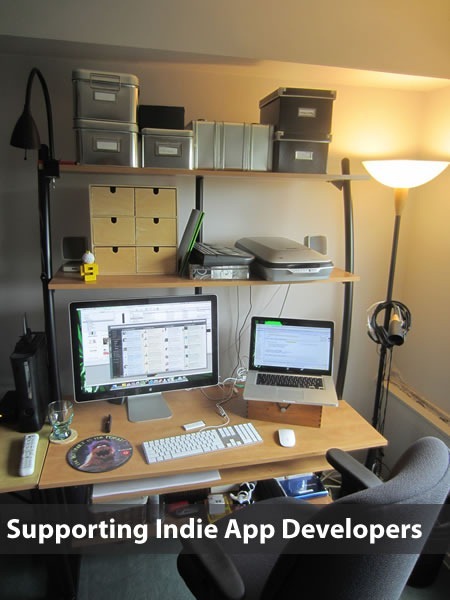
The idea behind the Shopify Fund is very simple: we want to support developers who build apps for the Shopify platform by giving them money so that they can work full-time for a few weeks on those apps without having to worry about paying their bills.
 And I’ve got a million dollars to make it happen! Say it with me: One. Meeeellion. Dollars.
And I’ve got a million dollars to make it happen! Say it with me: One. Meeeellion. Dollars.
Many of us at Shopify, myself included, have worked at small or one-person development shops, so we know what it’s like to have to pick and choose projects in order to stay afloat. We hope that the Shopify Fund will make that choice easier and make it possible for you to build apps for our great ecommerce platform and fill your wallet at the same time.
(This section’s for developers who aren’t familiar with Shopify. Feel free to jump ahead if this is old news to you.)
Those of you new to Shopify might not be aware that it’s not just a hosted ecommerce system, but also a platform that offers a RESTful API. This API gives you the capability to programmatically perform many of the actions that a shopowner can perform from his or her control panel. With the API, you can automate tasks to make shopowners’ and customers’ lives easier, provide shopowners with different views and insights into their shops’ data, integrate Shopify with a world of online services and generally expand that capabilities of Shopify shops.
(If you’d like to know more about Shopify’s API, check out our API documentation.)
Shopify also provides a place for developers to sell their Shopify apps: the Shopify App Store. It’s a one-stop shop that:
In 2010, almost half of our active shopowners had installed at least one app.

If you’re a developer with an idea for a Shopify app, we’d like to hear from you! Drop us a line at fund@shopify.com and we’ll evaluate your idea. If we think it’s worth funding, we’ll provide an advance in the neighbourhood of $5,000 to $10,000 (and hey, maybe more if we think it’s going to be big) on future sales in the App Store.
If this sounds like a literary advance, that’s because that’s the model we’re using – but a little bit nicer. Here’s a quick description of how it works:

If you have programming skills but can’t think of any Shopify app ideas, check out the App Wishlist in our wiki. It’s full of ideas, and one of them might be right up your alley.
If you still can’t think of any Shopify app ideas but have killer programming skills and would like to work on a Shopify app, we’d still like to hear from you. We might be able to assign you to a project of our choosing.
…be sure to check out the new Shopify Fund page and if you’re interested, drop us a line at fund@shopify.com to find out more or to propose an app that you’d like to have us fund!
Keep an eye on this blog as well: we’re going to be talking about building apps on the Shopify platform for the next little while.
This article also appears in the Shopify Technology Blog.
Here’s the first paragraph of the press release that Shopify put out this morning:
OTTAWA, Ontario, Oct. 17, 2011 /PRNewswire via COMTEX/ — Shopify, a leading ecommerce platform used to create and power online stores, today announced that it closed a $15 million Series B growth investment from Bessemer Venture Partners, FirstMark Capital, Felicis Ventures, and Georgian Partners. This new investment adds to the $7 million of Series A funding received last year, providing a sizable balance to fund continued growth.
Tobi, our CEO, also made the announcement on the Shopify blog.
Here’s a quick run-down of Shopify for those of you who aren’t familiar with what we do:
Shopify is a hosted ecommerce platform that makes it easy to create an online store and sell products online. It was created out of necessity — when Shopify CEO and co-founder Tobi Lutke and friends wanted to start an online store for snowboarding equipment, they couldn’t find any ecommerce platform they liked. Being software developers, they did what came naturally: they wrote their own. It then occurred to them that it wasn’t snowboards they should be selling, but shops. And thus Shopify was born.
Creative Commons photo by NeilsPhotography. Click the photo to see the original.
When we say “15,000+ shops run on Shopify”, we mean 15,000+ active shops. These shops aren’t free trials, but active paid accounts actually selling stuff. Among our customers are: Angry Birds, Beastie Boys, CrossFit, DODOcase, Evernote, Evisu, Foo Fighters, GitHub, LMFAO, Penny Arcade and Tesla Motors.
In 2010, 2.7 million customers shopped at Shopify shops. To give you an idea of how many people that is, that’s the same number of people that lived within the city of Chicago that year (according to Wikipedia).
Creative Commons photo by Jay Reed. Click the photo to see the original.
Those 2.7 million customers placed a total of 1.6 million orders that year. That’s a lot of shopping carts.
Creative Commons photo by Mr. Spielbrick. Click the photo to see the original.
Those 1.6 million orders, put together, combine to form a sum of $124 million in sales for 2010. That’s about the budget of each one of the Harry Potter and the Deathly Hallows films.
Let’s talk about Shopify’s field, ecommerce.
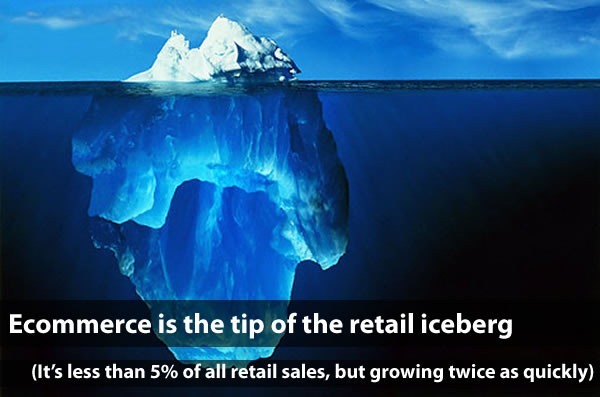
According to the U.S. Census Bureau, ecommerce represents less than 5% of all retail sales in America, but growing at twice the rate.

In the second quarter of this year – that’s just the months of April, May and June 2011 – the total retail sales in the U.S. was just over $1 trillion ($1.04 trillion, if you want to be a little more exact).

(If you need an idea of how much $1 trillion is, PageTutor has a great graphic explanation.)
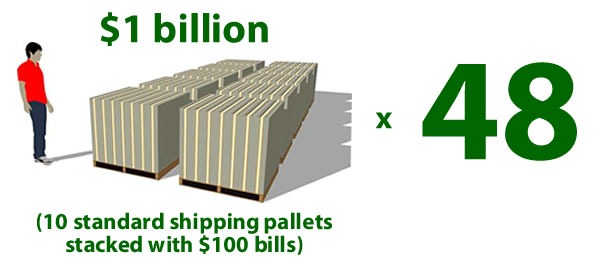
Ecommerce was just a tiny slice of that $1 trillion in three months, but still respectable. In the second quarter of 2011, ecommerce sales in the U.S. were $48 billion.
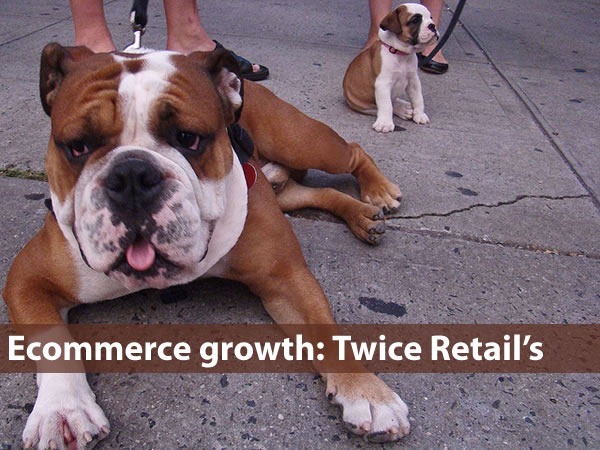
And wilder still: sales through ecommerce are growing at twice the rate of all retail. In the second quarter of 2011, total retail sales grew by 8.1%; ecommerce sales in the same period grew by 17.6%.
This article also appears in The Adventures of Accordion Guy in the 21st Century.
Readers of the Accordion Guy blog will know that I spent the summer doing my “immersion” at my new job as Shopify’s Platform Evangelist at the Shopify offices in Ottawa. When summer ended, so did the immersion, and I returned back home to Accordion City, where I’m doing a fair bit of work from my home office. To get a look at my home setup, go read my blog post titled Old Office, New Office.

What you might not know is that Shopify recently picked up another employee based in the Greater Toronto Area: Craig Miller (pictured on the right), who used to be the head of product of the Canadian wing of Kijiji, whose parent company is none other than eBay. He’s now Shopify’s VP Marketing.
While my role allows me to be very flexible with where I work, Craig’s requires a more permanent space. After doing a little searching for some suitable digs for Shopify’s Toronto office, he picked a great spot run by some friends of mine: Camaraderie, located on the east side of downtown, a stone’s throw from the financial district.
![]() Camaraderie – from the French and meaning “a spirit of friendly good-fellowship – is a coworking space founded by Rachel Young and Wayne “Bunnyhero” Lee, two names that people who follow the Toronto tech and startup scene will recognize.
Camaraderie – from the French and meaning “a spirit of friendly good-fellowship – is a coworking space founded by Rachel Young and Wayne “Bunnyhero” Lee, two names that people who follow the Toronto tech and startup scene will recognize.

Camaraderie occupies the second and third floors of the building at 102 Adelaide Street East. Like many coworking spaces, it offers a common working area with desks as well as a couple of private offices. There’s also a boardroom, a kitchen on each floor, a small lounge and tech amenities like wifi, printing and scanning. In addition to functioning as an office during business hours, Camaraderie has also opened its doors for events from parties and art shows to Crisis Camp workshops. Camaraderie is a vital part of Toronto’s tech and startup community, and I’m incredibly pleased that I’m adding it to my regular stomping grounds“
Shopify takes possession of its private office within Camaraderie on Tuesday, November 1st. Craig will be doing his VP Marketing thing at Camaraderie full time. I’m planning on starting the day at the home office and then coming into the office for the afternoon, commuting there by bike as often as possible (the commute on bike takes only slightly longer than the commute by transit). I’m looking forward being a Camaraderie regular!
This article also appears in The Adventures of Accordion Guy in the 21st Century.
Creative Commons photo by Michael Vroegop. Click here to see the original.
Over at the Shopify Technology Blog, Shopify developer Jesse Storimer says that Most Memory Leaks are Good. Here’s the “tl; dr” summary of his article:
Catastrophe! Your app is leaking memory. When it runs in production it crashes and starts raising
Errno::ENOMEMexceptions. So you babysit it and restart it consistently so that your app keeps responding.As hard as you try you don’t see any memory leaks. You use the available tools, but you can’t find the leak. Understanding your full stack, knowing your tools, and good ol’ debugging will help you find that memory leak.
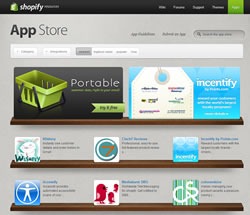 The Shopify platform has a lot of great features "out of the box", and it’s even better with apps — programs and utilities that extend Shopify by adding more capabilities to what’s already built in. If you haven’t done so yet, go and visit our App Store: the one-stop place for apps to enhance your shop in all sorts of ways, from boosting sales to improving the customer experience to simplifying the management of your shop. We’ve got apps aplenty, and more are being added all the time.
The Shopify platform has a lot of great features "out of the box", and it’s even better with apps — programs and utilities that extend Shopify by adding more capabilities to what’s already built in. If you haven’t done so yet, go and visit our App Store: the one-stop place for apps to enhance your shop in all sorts of ways, from boosting sales to improving the customer experience to simplifying the management of your shop. We’ve got apps aplenty, and more are being added all the time.
Today’s featured app is colorandsize, an app that falls under the category of "simplifying the management of your shop". We asked Retail Technology, the creators of colorsize, some questions and posted their answers below.
 colorandsize makes managing your product variants a pleasure, saving you valuable time and money. If your shop carries products that come in many colors and sizes, you need colorandsize!
colorandsize makes managing your product variants a pleasure, saving you valuable time and money. If your shop carries products that come in many colors and sizes, you need colorandsize!
colorandsize lets you…
colorandsize will save you valuable time and much effort.
Creating a style available in four colors and six sizes in Shopify takes 2.5 minutes. Using colorandsize to do the same only takes sixty seconds. The time savings adds up: with colorandsize, creating your average seasonal collection can be reduced by a staggering two working days!
colorandsize also simplifies Shopify’s process of receiving inventory, cutting down the time it takes to seconds.
Changing a style’s price in colorandsize is a breeze! It vastly simplifies and speeds up your style editing.
colorandsize also makes it easy to track sales trends based on color and size. It provides a clear and simple overview of your sales and stock, organized by color and size, putting valuable information at your fingertips. This really helps you to manage your stock and to optimize your sales!
colorandsize: clear and simple!

colorandsize is a concept borne from thirty years of first-hand experience in shoe and apparel retail operations. colorandsize is a spin-off brought to you by Retail Technology Limited who specialise in conventional point-of-sale and stock management systems. We service retailers throughout throughout the world.
colorandsize is dedicated to a first-class customer experience and its support team is there to help you every step of the way even if colorandsize really is easy to install and is very intuitive.
colorandsize believes that the future of retail systems is in the cloud and wants to share its vast experience in the shoe and apparel vertical with other system providers. Further releases of colorandsize will support direct integration with Shopkeep and VendHQ.
You can learn more about colorandsize at the Shopify App Store, as well as through colorandsize, who can be reached in the following ways:
Comic by Jason Pultz. Click to see it at full size.
This article also appears in The Adventures of Accordion Guy in the 21st Century.